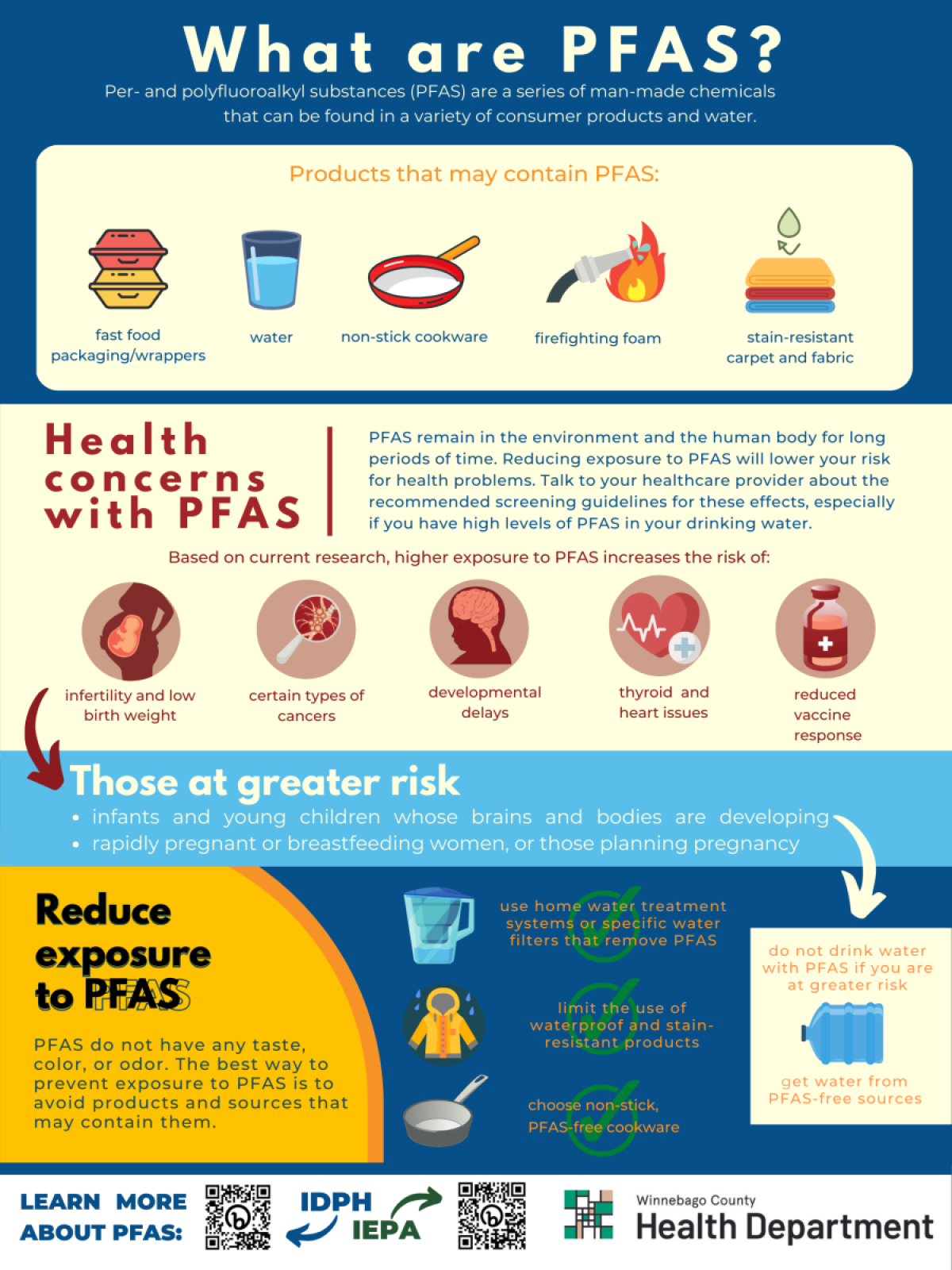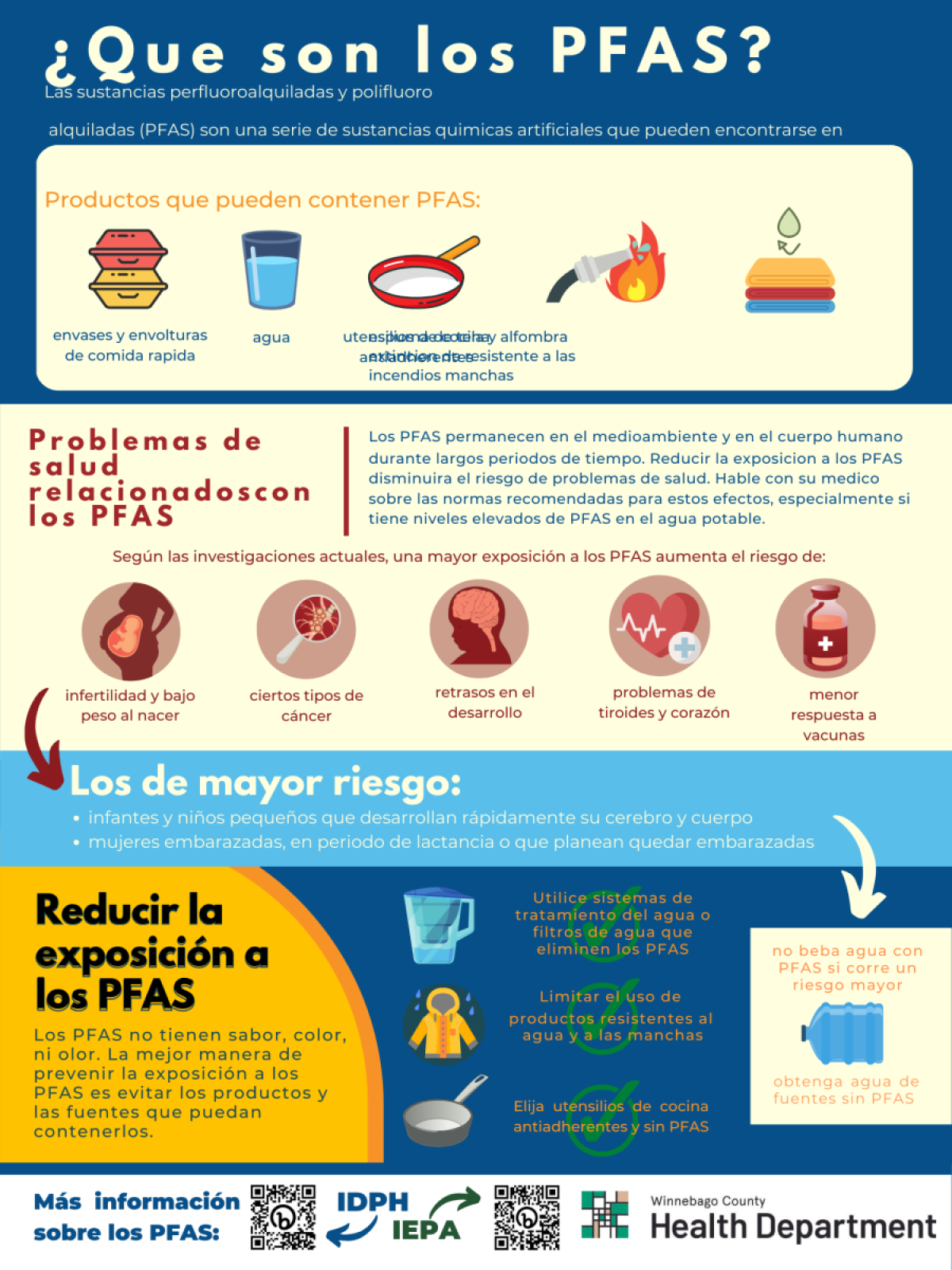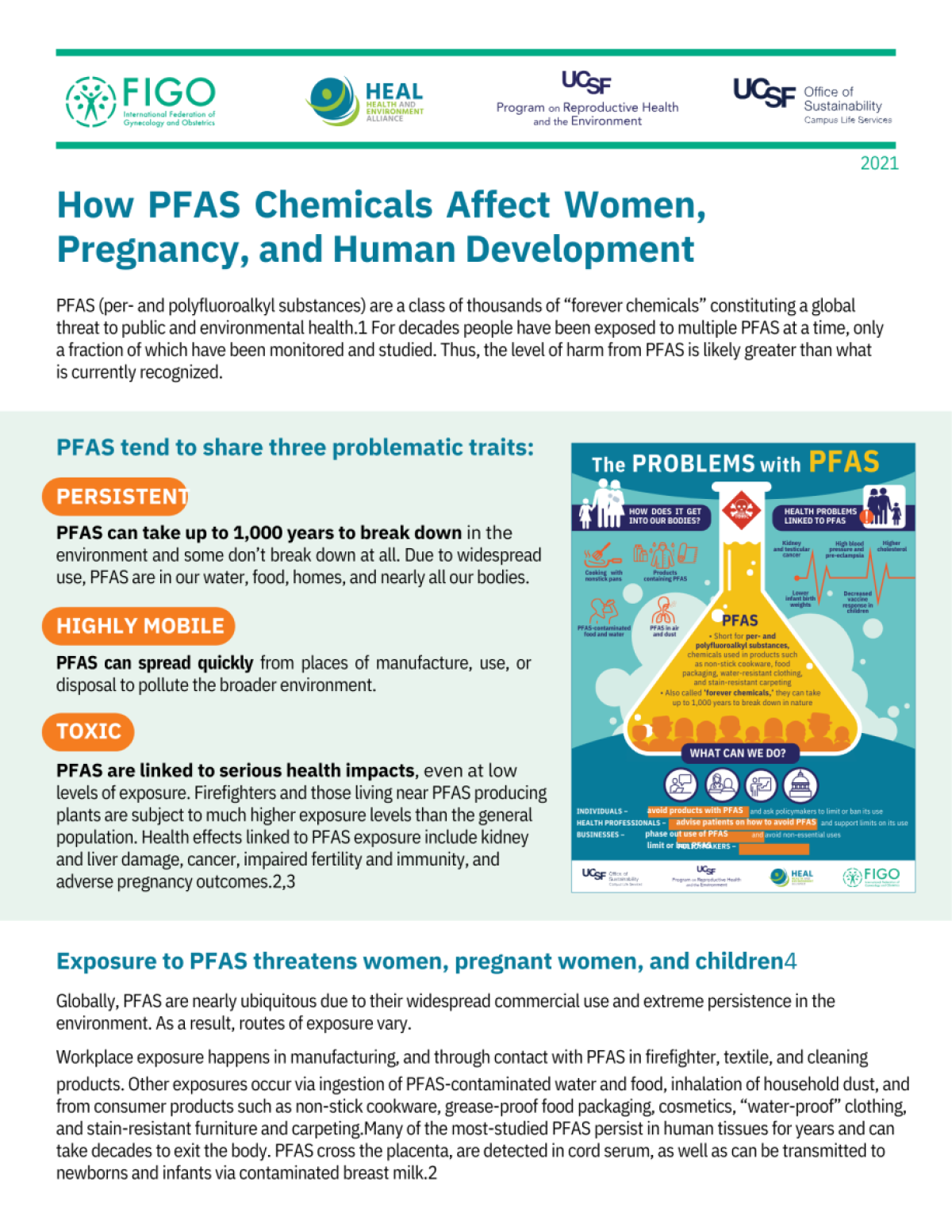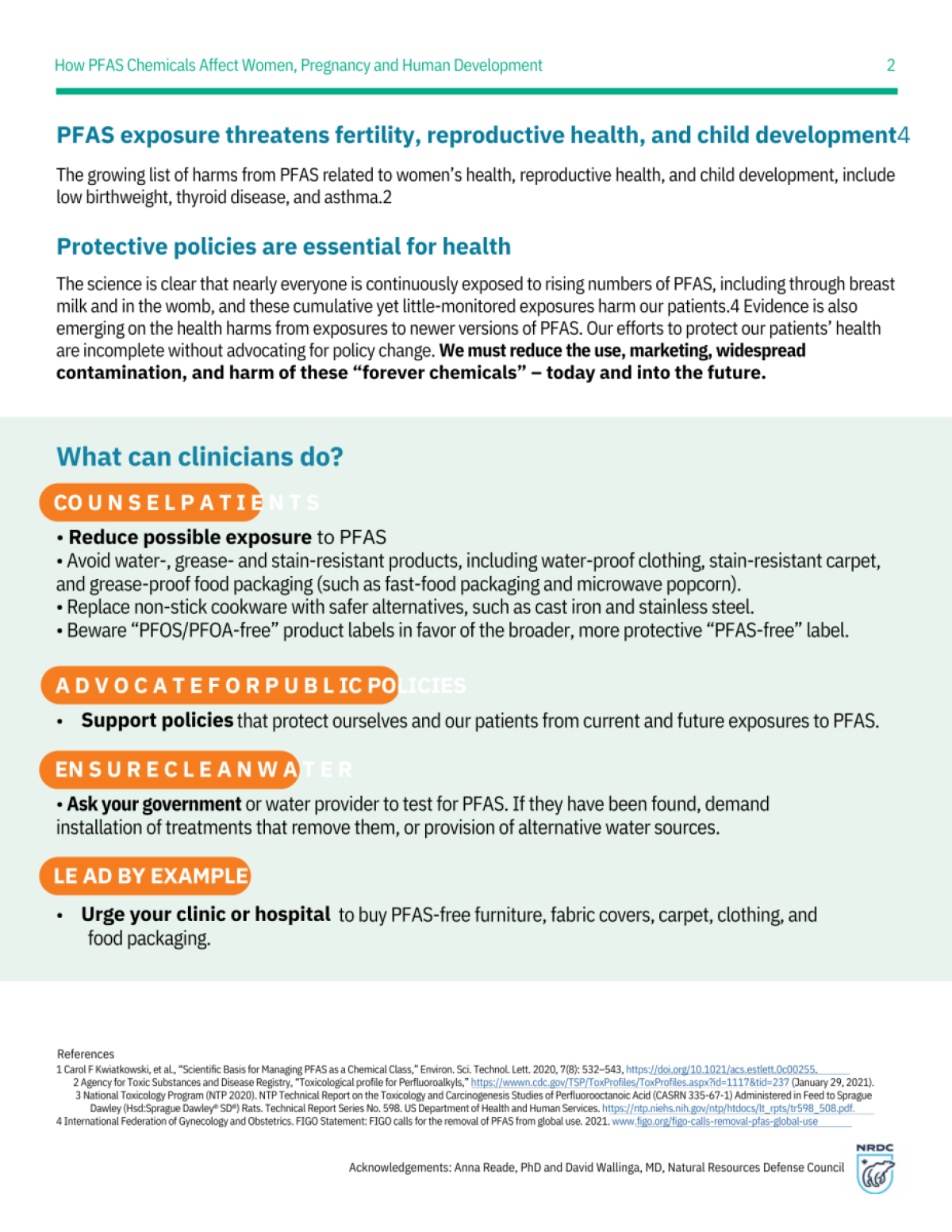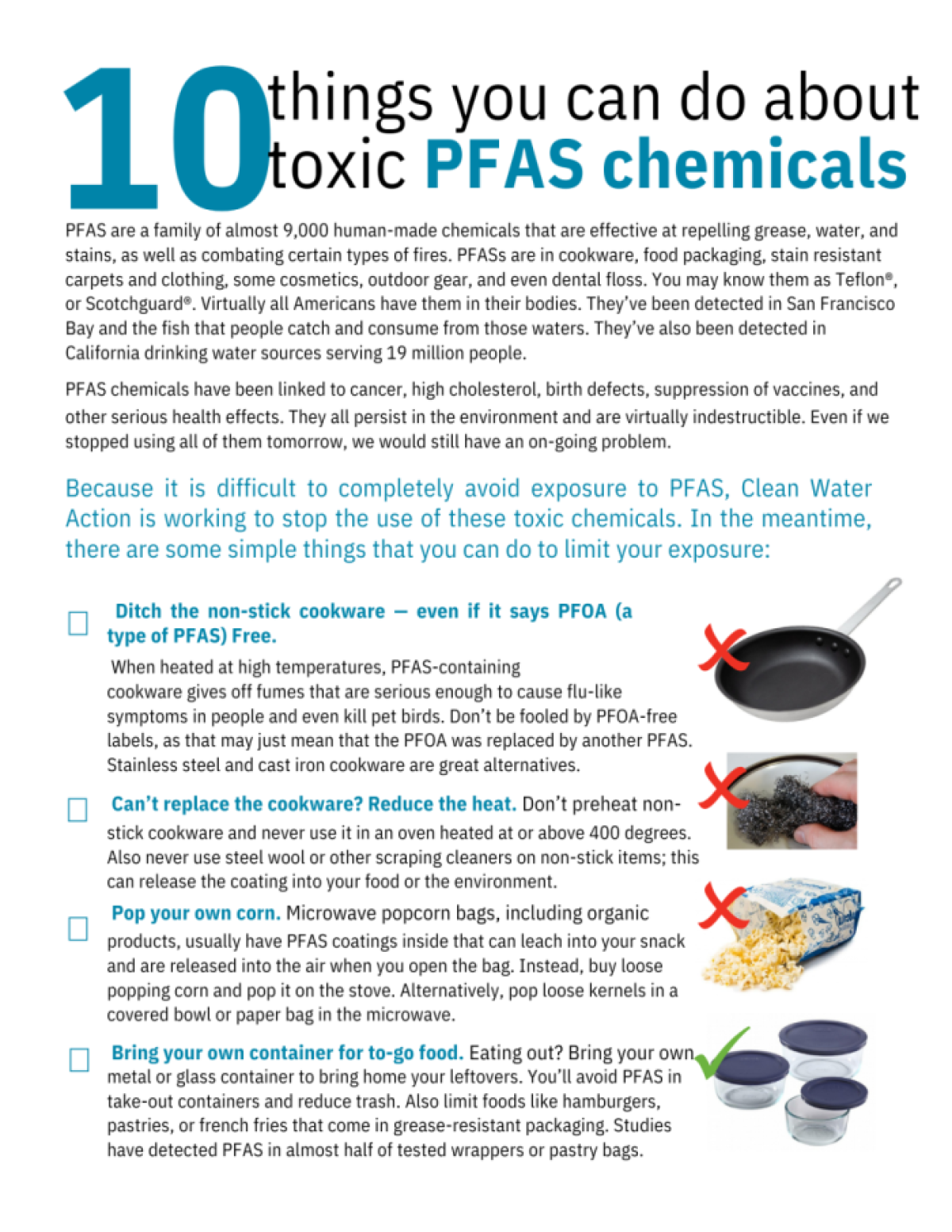PFAS (per- and polyfluoroalkyl substances)
FACT/RESIDENT INFO SHEET
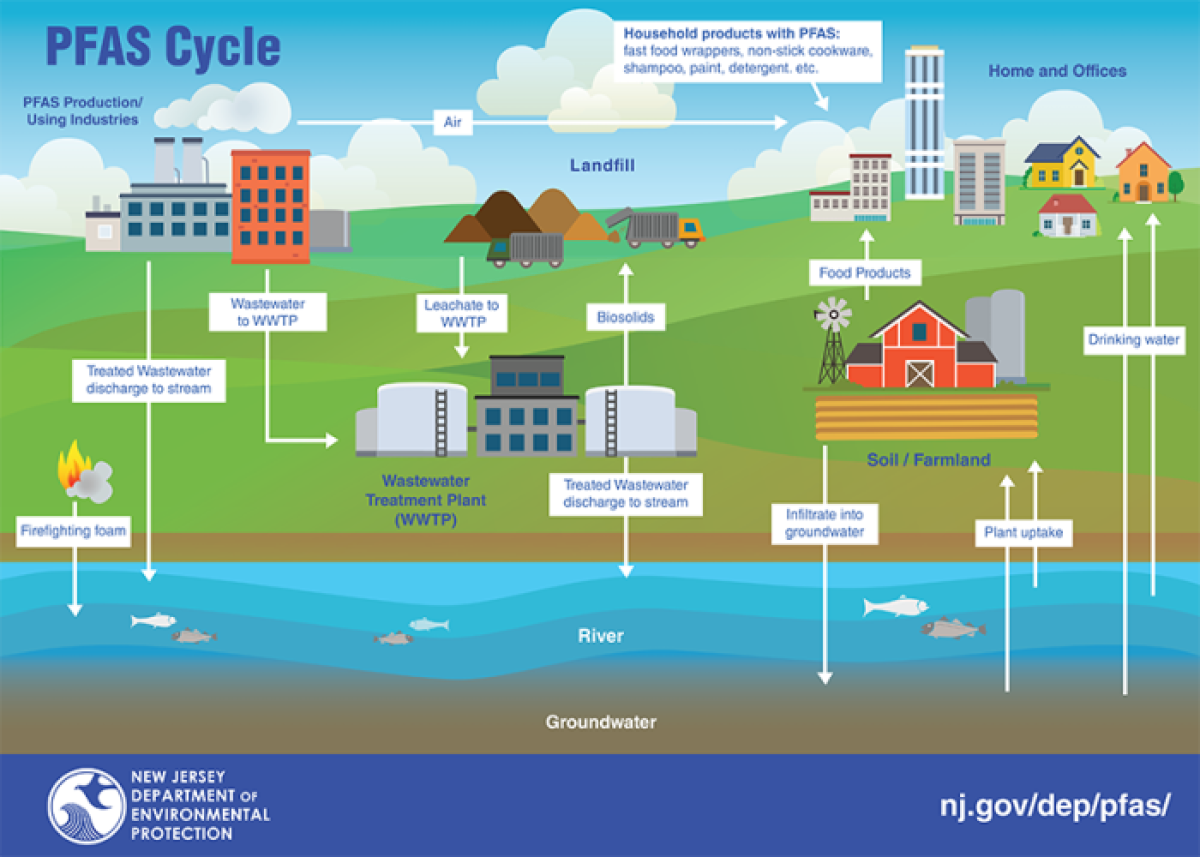
-
For the direct link to the Mount Olive Township Public Works Page: CLICK HERE
-
For a list of Morris County Certified Labs for Drinking Water- https://njems.nj.gov/DataMiner
-
PFAS (per- and polyfluoroalkyl substances) are a group of man-made chemicals that have been used in a wide range of industrial and consumer products due to their water- and grease-resistant properties.
-
Unfortunately, PFAS are persistent in the environment and can accumulate in the human body, potentially leading to health concerns. Here are some common sources of PFAS and ways to prevent exposure:
Consumer Products:
- Cookware: Nonstick cookware (Teflon), especially older versions, may contain PFAS. Consider using alternatives like cast iron, stainless steel, or ceramic cookware.
- Waterproof Clothing: Some waterproof jackets and outdoor gear may have PFAS-based coatings. Look for PFAS-free alternatives.
- Stain-Resistant Fabrics: Carpets, upholstery, and textiles treated with stain or water repellents may contain PFAS. Choose untreated or PFAS-free options.
- Food Packaging: Certain fast-food wrappers, microwave popcorn bags, and pizza boxes may contain PFAS. Limit consumption of fast food and processed foods packaged in such materials.
Food and Water:
- Contaminated Water: PFAS can leach into drinking water supplies from contaminated soil, groundwater, and surface water. Use a water filter that is specifically designed to remove PFAS, and be aware of local water quality reports.
- Fish: Some fish may contain PFAS due to water contamination. Check local advisories and guidelines for safe fish consumption.
Industrial Sources:
- Firefighting Foam: PFAS-containing firefighting foam has been used at military bases and airports. Avoid exposure to runoff from training areas or incidents involving the use of this foam.
Manufacturing Facilities:
- Certain industrial facilities that use PFAS in their processes may release these chemicals into the environment. Be aware of local environmental regulations and potential sources of pollution in your area.
Personal Care Products:
- Some cosmetics, such as foundation and mascara, may contain PFAS. Check product labels for ingredients and opt for PFAS-free alternatives.
Household Products:
- Certain cleaning products, such as stain repellents and carpet cleaners, may contain PFAS. Choose products without these chemicals or make homemade cleaning solutions.
To prevent exposure to PFAS, you can take the following measures:
- Read Labels: Check product labels for PFAS-related ingredients, such as perfluorooctanoic acid (PFOA) and perfluorooctane sulfonate (PFOS).
- Filter Your Water: Use a certified water filter that is capable of removing PFAS contaminants from your drinking water.
- Avoid Fast Food Packaging: Reduce your consumption of fast food and packaged processed foods that may be served in PFAS-containing containers.
- Choose PFAS-Free Products: When shopping for cookware, clothing, cosmetics, and household products, opt for items labeled as PFAS-free.
- Support Regulations: Advocate for stronger environmental regulations and guidelines to limit the use and release of PFAS by industries.
Links to check for more information:
- For a list of items that are PFAS Free- CLICK HERE
- https://dep.nj.gov/pfas/
- https://www.nj.gov/health/ceohs/documents/pfas_drinking%20water.pdf
- https://www.epa.gov/pfas
- https://dep.nj.gov/wp-content/uploads/pfas/docs/faq-pfas-in-drinking-water.pdf
For information on Certified Laboratories for Testing :
Due to their widespread production and use, as well as their ability to move and persist in the environment, surveys conducted by the Centers for Disease Control and Prevention (CDC) show that most people in the United States have been exposed to some PFAS. Most known exposures are relatively low, but some can be high, particularly when people are exposed to a concentrated source over long periods of time. Some PFAS chemicals can accumulate in the body over time.
Current research has shown that people can be exposed to PFAS by:
- Working in occupations such as firefighting or chemicals manufacturing and processing.
- Drinking water contaminated with PFAS.
- Eating certain foods that may contain PFAS, including fish.
- Swallowing contaminated soil or dust.
- Breathing air containing PFAS.
- Using products made with PFAS or that are packaged in materials containing PFAS.
